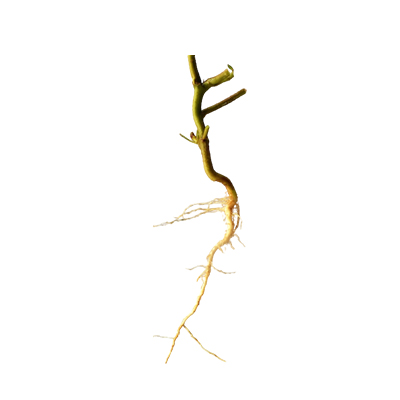Black Pigweed
Trianthema portulacastrum L.
Aizoaceae
Location in our garden
Principal



Synonym
Portulacastrum monogynum Medik.
Tetragonia chisimajensis Chiov.
Trianthema flexuosum Schumach. & Thonn.
Habitus
Herbaceous. An annual, succulent, prostrate or ascending herb, grows up to about 60 cm tall
Part Used
Leaves
Seeds
Roots
Stem
Growing Requirements
Full Sunshine
Need Shade
Habitat
Roadside
Grassland
Overview
Black pigweed is native to tropical Africa and Asia and most of the Southern states of the USA, but has become naturalized in many other tropical and subtropical countries. It is found in Peninsular Malaysia, the Philippines, Indonesia, and Papua New Guinea. The plant is harvested from the wild for local use. It has a number of medicinal virtues and is sometimes also eaten.
Vernacular Names
Shu mo shi ma chi xian (Chinese), Biskhapra (India), Verdolaga (Spanish), Sam bien (Vietnamese), Pourpier courant (French), Chonkuëng' praëhs. (Cambodia), Toston (Tagalog-Philippines).
Agroecology
T. portulacastrum is a common weed in fields and in open, sunny localities such as roadsides, often found on clayey soils near the sea, up to 200 m altitudes. It is an aggressive weed, especially in Thailand, Australia and South America, and can be controlled either by uprooting the plants before flowering.
Morphology
- Roots - uproot white or brown.
- Stems - procumbent, rounded, solid, hairy, succulent, stipules present, glabrous.
- Leaves - opposite, ovate-obovate to obcordate-oblong, 1-5 cm × 0.5-4.5 cm, those of the same pair very unequal in size, margin entire, purple or green, petiole 4-30 mm long, dilated and sheathing at the base, pairwise connate into a funnel-shaped sheath; stipules small, 1 on each side on the petiole.
- Flowers - bisexual, actinomorphous; sepals -(perianth) 5-lobed, tube fused with the petiolar sheath, with the 2 pointed bracteoles, and even with the stem, lobes obtuse with a long dorsal, subapical mucro, pale pink, rarely white, petals absent.
- Fruits - capsule, 5 mm × 3 mm, partly exserted from the persistent perianth, apex truncate, bilobed, operculum fleshy, indehiscent, basal part of capsule thin-walled.
- Seeds - 2-8, reniform, 1.5-2.5 mm long, with faint wavy ribs, black
Cultivation
- Reproductive propagation by seeds. It germinates by sown in situ at temperatures between 20-45 °C, with an optimum at 35 °C.
- Vegetative propagation by stem cuttings
Chemical Constituents
Glycosides, saponnin, trianthenol, ecdysterone, carotene, essential oil, sesquiterpenes, hexahydro-farnesyl acetone, verbenene, incensole acetate, 3-p-manthane.
Traditional Medicinal Uses
- The roots are abortifacient, cathartic, emmenagogue and stomachic.
- The leaves are diuretic, it is used in the treatment of oedema, jaundice, strangury and dropsy.
- Pharmacological investigations of extracts of the plant revealed beneficial effects on the liver.
- An ethanol extract of the plant has also shown some effects on blood pressure.
- In Nigeria, leaves are used for the treatment of edema, strangury, and dropsy. Old leaves are used in the treatment of gonorrhea.
- In Andhra Pradesh, India, leaves are used for snake bites and rheumatism.
- Herb decoction is used as vermifuge and for rheumatism. Also used as an antidote for alcoholic poisoning.
- The root is applied to the eye to treat corneal itching, inflammation and decreasing vision.
- Powdered roots with ginger are cathartic and irritant
Part Used
Reference Sources
- Aguilar, N.O. (2016). Pl@ntuse. Trianthema portulacastrum (PROSEA). https://uses.plantnet-project.org/en/Trianthema_portulacastrum_(PROSEA). 02-03-2021.
- CABI. (No date). Invasive Species Compendium-Trianthema portulacastrum (horse purslane) https://www.cabi.org/isc/datasheet/55100. 03-03-2021.
- Fern, Ken. (2014). Useful Tropical Plants: Trianthema portulacastrum. http://tropical.theferns.info/viewtropical.php?id=Trianthema+portulacastrum. 02-03-2021.
- Globinmed. (No date). Trianthema portulacastrum L.. https://www.globinmed.com/index.php?option=com_content&view=article&id=62905:trianthema-portulacastrum-l&catid=8&Itemid=183. 02-03-2021.
- Some Magnetic Island Plants. (2019). Trianthema portulacastrum. https://www.somemagneticislandplants.com.au/giant-pigweed. 03-03-2021.
- StuartXchange. (2015). Philippine Medicinal Plants: Toston. http://stuartxchange.com/Toston.html. 02-03-2021.



